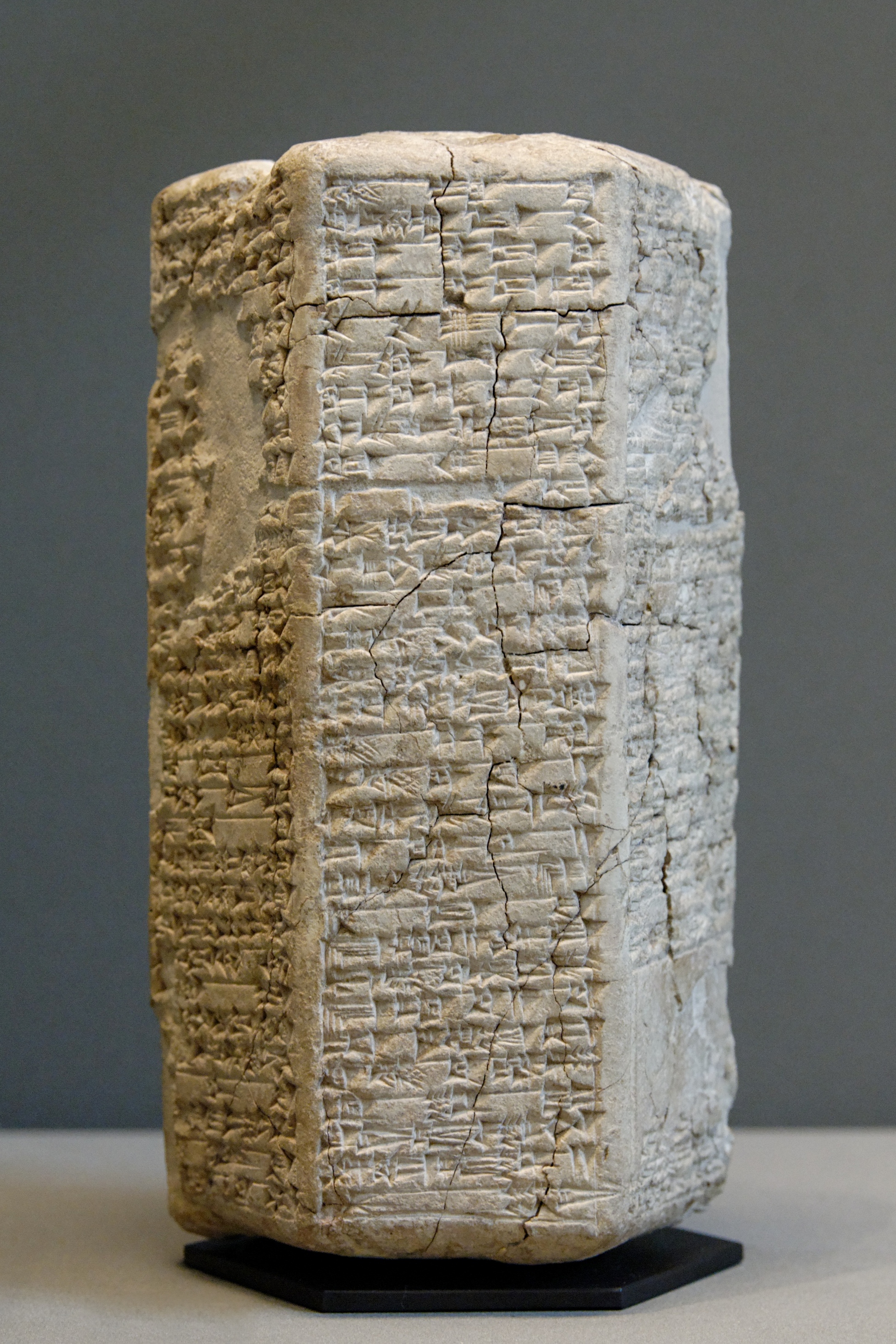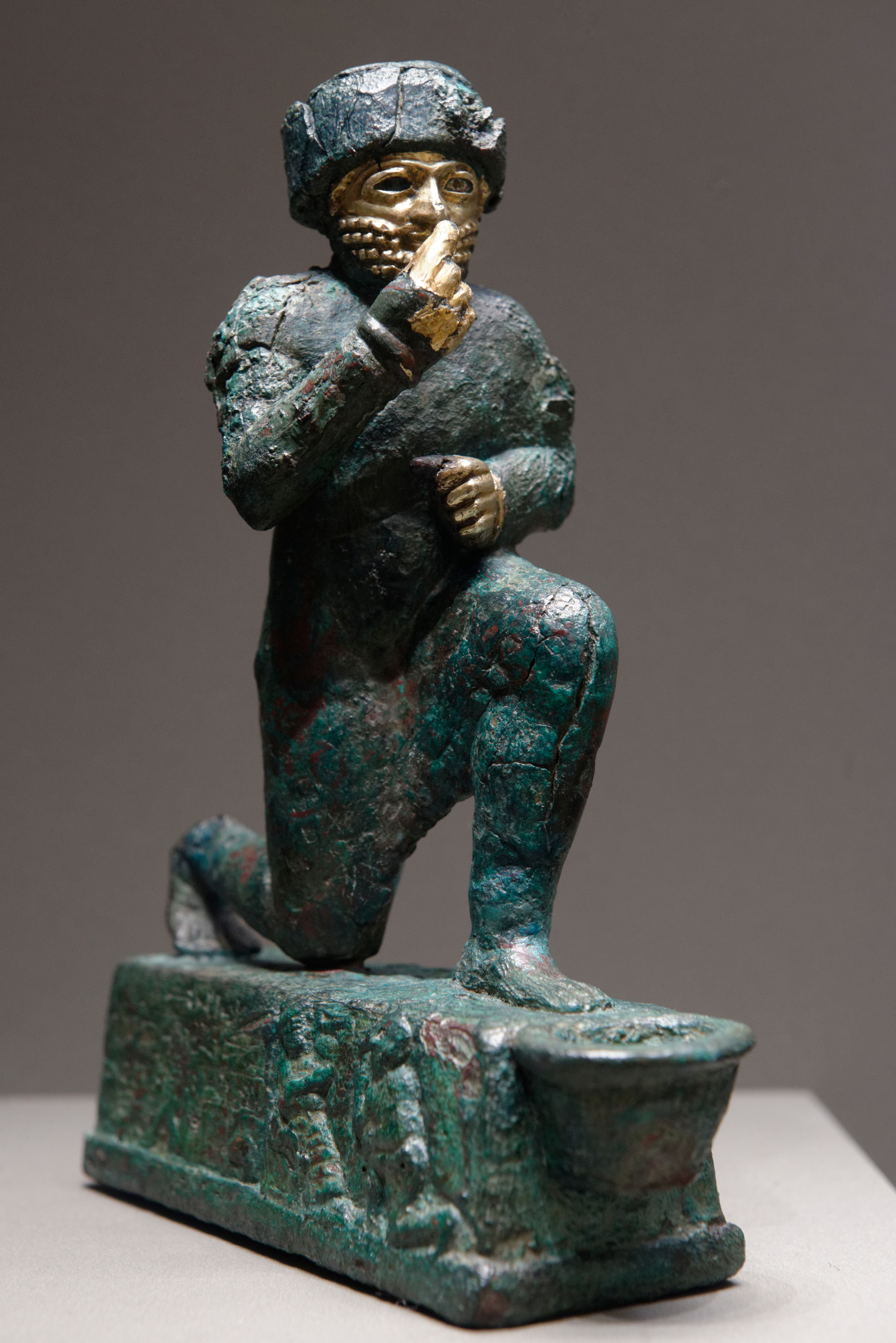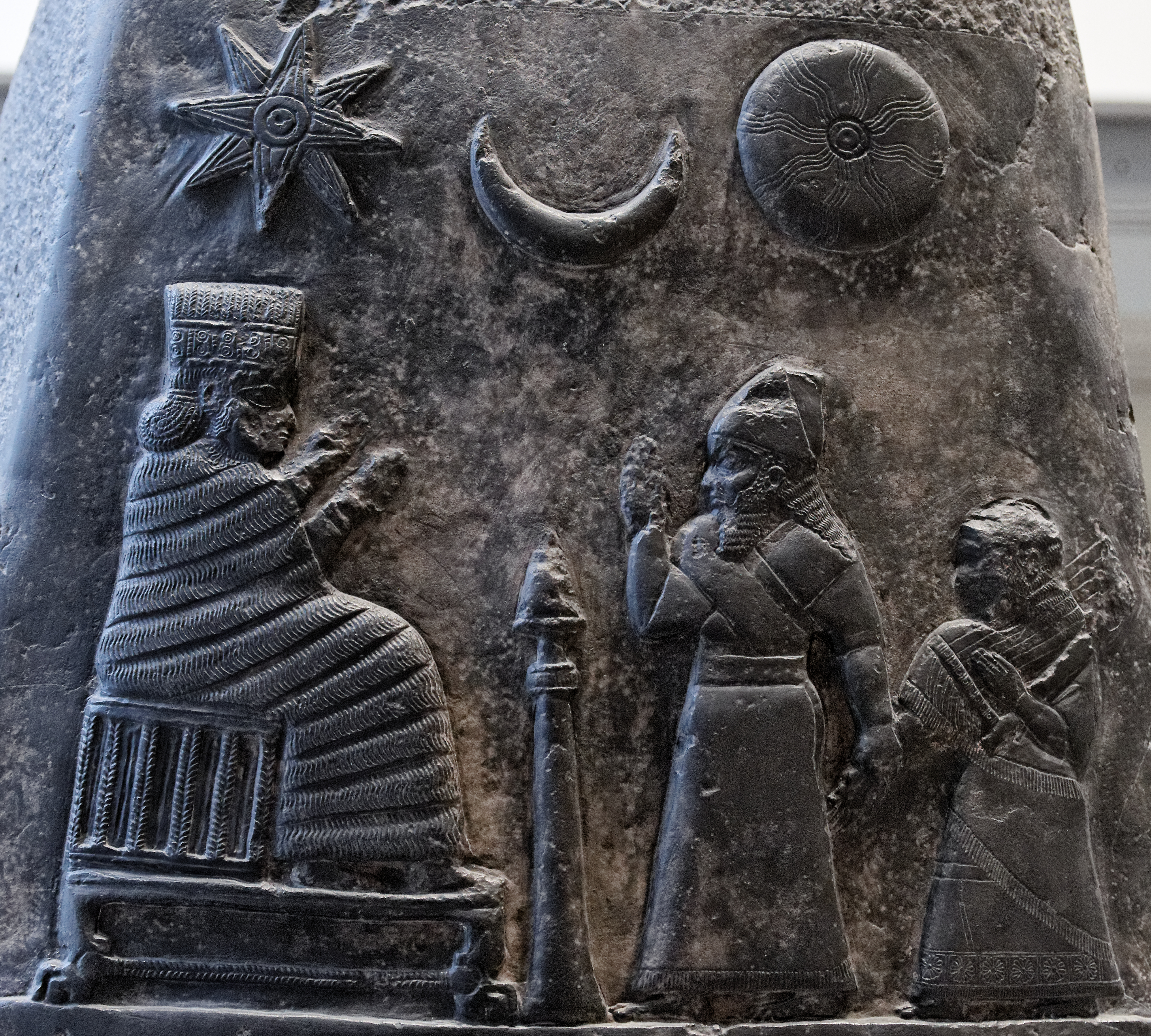|
Iddin-Dagān
Iddin-Dagan (, Di-din- D da-gan), ''fl.'' ''c.'' 1975 BC — ''c.'' 1954 BC ( MC) was the 3rd king of the dynasty of Isin. Iddin-Dagan was preceded by his father Shu-Ilishu. Išme-Dagān then succeeded Iddin-Dagan. Iddin-Dagan reigned for 21 years (according to the ''Sumerian King List''.)''Sumerian King List'' extant in 16 copies. He is best known for his participation in the sacred marriage rite and the sexually-explicit hymn that described it. Biography His titles included: “Mighty King” — “King of Isin” — “King of Ur” — “King of the Land of Sumer and Akkad.”''lugal-kala-ga'', ''lugal-i-si-in-''KI''-ga'' (''lugal-''KI''-úri-ma''), ''lugal-''KI''-en-gi-''KI''-uri-ke''4. The first year name recorded on a receipt for flour and datesTablet UM 55–21–102, University Museum, Philadelphia. reads: “Year Iddin-Dagān (was) king and (his) daughter Matum-Niatum (“the land which belongs to us”) was taken in marriage by the king of Anshan.”''mu'' d''I- ... [...More Info...] [...Related Items...] OR: [Wikipedia] [Google] [Baidu] |
Dynasty Of Isin
The Dynasty of Isin refers to the final ruling dynasty listed on the ''Sumerian King List'' (''SKL''). The list of the Kings of Isin with the length of their reigns, also appears on a cuneiform document listing the kings of Ur and Isin, the ''List of Reigns of Kings of Ur and Isin'' (MS 1686). The dynasty was situated within the ancient city of Isin (today known as the archaeological site of Ishan al-Bahriyat). It is believed to have flourished –1717 BCE according to the short chronology timeline of the ancient Near East. It was preceded on the ''Sumerian King List'' by the Third Dynasty of Ur. The Dynasty of Isin is often associated with the nearby and contemporary dynasty of Larsa (1961–1674 BCE), and they are often regrouped for periodization purposes under the name " Isin-Larsa period". Both dynasties were succeeded by the First Babylonian Empire. History Reign of Ishbi-Erra Ishbi-Erra (''fl.'' ''c.'' 1953—1920 BCE by the short chronology) was the founder of the ... [...More Info...] [...Related Items...] OR: [Wikipedia] [Google] [Baidu] |
Ishme-Dagan
Ishme-Dagan (, Diš-me- Dda-gan, ''Išme-Dagān''; c. 1953-1935 BC ( MC) was the 4th king of the First Dynasty of Isin, according to the "''Sumerian King List''" (''SKL''). Also according to the ''SKL'': he was both the son and successor of Iddin-Dagān. Lipit-Ištar then succeeded Išme-Dagān. Išme-Dagān was one of the kings to restore the Ekur. File:Stamped brick with the name of Ishme-Dagan, king of Isin, Isin-Larsa Period, from Ur, currently housed in the British Museum.jpg, Stamped brick with the name of Ishme-Dagan, king of Isin, Isin-Larsa Period, from Ur, British Museum See also * Isin * Sumer * Amorites * History of Sumer *List of Mesopotamian dynasties The history of Mesopotamia extends from the Lower Paleolithic period until the establishment of the Caliphate in the late 7th century AD, after which the region came to be known as History of Iraq, Iraq. This list covers dynasties and monarchs of ... References Amorite kings 19th-century BC S ... [...More Info...] [...Related Items...] OR: [Wikipedia] [Google] [Baidu] |
Shu-Ilishu
Shu-Ilishu ( Akkadian: ''Šu-ilišu''; ''fl.'' ''c.'' 1984 BC — ''c.'' 1975 BC ( MC) was the 2nd ruler of the dynasty of Isin. Beginning on his ascension his name was written d''Šu-i-li-šu'' with the dingir indicating that he was deified. He reigned for 10 years (according to his extant year-names and a single copy of the ''Sumerian King List'',''Sumerian King List'', MS 1686. which differs from the 20 years recorded by others.)Such as WB 444, the Weld-Blundell prism. Shu-Ilishu was preceded by Išbi-erra. Iddin-Dagān then succeeded Shu-Ilishu. Shu-Ilishu is best known for his retrieval of the cultic idol of Nanna from the Elamites and its return to Ur. Biography Shu-Ilishu's inscriptions gave him the titles: “Mighty Man” — “King of Ur” — “God of His Nation” — “Beloved of the gods Anu, Enlil, and Nanna” — “King of the Land of Sumer and Akkad” — “Beloved of the god Enlil and the goddess Ninisina” — “Lord of his Land”, but no ... [...More Info...] [...Related Items...] OR: [Wikipedia] [Google] [Baidu] |
King Of Isin
Isin (, modern Arabic: Ishan al-Bahriyat) is an archaeological site in Al-Qādisiyyah Governorate, Iraq which was the location of the Ancient Near East city of Isin, occupied from the late 4th millennium Uruk period up until at least the late 1st millennium BC Neo-Babylonian period. It lies about southeast of the modern city of Al Diwaniyah. The tutelary deity of Isin, dating back to at least the Early Dynastic period, was the healing goddess Gula with a major temple (, E-gal-ma) sited there as well as smaller installations for the related gods of Ninisina and Sud. Archaeology Isin is located approximately south of the ancient city of Nippur. The site covers an area of about 150 hectares with a maximum height of about 10 meters. By 1922 the site had been suggested as that of Isin. Ishan al-Bahriyat was visited by Stephen Herbert Langdon for a day to conduct a sounding, while he was excavating at Kish in 1924. He found inscribed bricks of Ishme-Dagan and Enlil-bani. Two ... [...More Info...] [...Related Items...] OR: [Wikipedia] [Google] [Baidu] |
Larsa
Larsa (, read ''Larsamki''), also referred to as Larancha/Laranchon (Gk. Λαραγχων) by Berossus, Berossos and connected with the biblical Arioch, Ellasar, was an important city-state of ancient Sumer, the center of the Cult (religious practice), cult of the sun god Utu with his temple E-babbar. It lies some southeast of Uruk in Iraq's Dhi Qar Governorate, near the east bank of the Shatt-en-Nil canal at the site of the modern settlement Tell as-Senkereh or Sankarah. Larsa is thought to be the source of a number of tablets involving Babylonian mathematics, including the Plimpton 322 tablet that contains patterns of Pythagorean triples. History Larsa is found (as UD.UNUG) on Proto-cuneiform lexical lists from the Uruk 4 period (late 4th millennium BC). A few Proto-cuneiform tablets were also found there. Three Neolithic clay tokens, from a slightly early period, were also found at Larsa. For most of its history Larsa was primarily a cult site for the god Utu. In the early p ... [...More Info...] [...Related Items...] OR: [Wikipedia] [Google] [Baidu] |
Gungunum
Gungunum (, dingir, Dgu-un-gu-nu-um) was a king of the city state of Larsa in southern Mesopotamia, ruling from 1932 to 1906 BC (middle chronology, MC). According to the traditional king list for Larsa, he was the fifth to rule the city, and in his own inscriptions he identifies himself as a son of Samium and brother to his immediate predecessor Zabaia, Zabaya. His name is Amorites, Amorite, and originates in the word gungun, meaning "protection", "defence" or "shelter". During the time Gungunum occupied the throne, Larsa went from being a city of lesser importance to become a powerful challenger to Isin, the dominant power in southern Mesopotamia since the fall of the Third Dynasty of Ur, Ur III empire in 2002 BC. Gungunum's reign of 27 years is also much better documented than those of his predecessors, as we have a complete chronological list of all his year names, as well as four of his royal inscriptions. This is in contrast to the complete lack of year names from the precedin ... [...More Info...] [...Related Items...] OR: [Wikipedia] [Google] [Baidu] |
Leonard Woolley
Sir Charles Leonard Woolley (17 April 1880 – 20 February 1960) was a British archaeologist best known for his Excavation (archaeology), excavations at Ur in Mesopotamia. He is recognized as one of the first "modern" archaeologists who excavated in a methodical way, keeping careful records, and using them to reconstruct ancient life and history. Woolley was knighted in 1935 for his contributions to the discipline of archaeology. He was married to the British archaeologist Katharine Woolley. Early life Woolley was the son of a clergyman, and was brother to Geoffrey Harold Woolley, Victoria Cross, VC, and George Cathcart Woolley. He was born at 13 Southwold Road, Upper Clapton, in the modern London Borough of Hackney and educated at St John's School, Leatherhead and New College, Oxford. He was interested in excavations from a young age. Career In 1905, Woolley became assistant of the Ashmolean Museum, Oxford. Volunteered by Arthur Evans to run the excavations on the Coria (Corb ... [...More Info...] [...Related Items...] OR: [Wikipedia] [Google] [Baidu] |
Bilalama
Bilalama was a 20th century BCE ruler of Eshnunna, an ancient Mesopotamian kingdom located in the Diyala Valley in modern Iraq. Background It is assumed that Bilalama was a contemporary of Ishbi-Erra and Shu-Ilishu of Isin. He was the son of the previous ruler of Eshnunna, Kirikiri. The names of both Bilalama and Kirikiri are Elamite, which according to Katrin de Graef might indicate that a dynastic change occurred in the city after the reign of their predecessor . However, it is not clear if they necessarily were Elamites themselves, or if their names only reflect a high level of Elamite cultural influence on Eshnunna. Bilalama married a daughter of Abda-El, an Amorite chieftain who earlier for diplomatic reasons had his son Ušašum marry a daughter of Nūr-aḫum. Both marriages were most likely meant to guarantee positive relations between the rulers of Eshnunna and the local Amorite groups. Two children of Bilalama are known. His daughter, married king of Elam, as docu ... [...More Info...] [...Related Items...] OR: [Wikipedia] [Google] [Baidu] |
Archaeologist
Archaeology or archeology is the study of human activity through the recovery and analysis of material culture. The archaeological record consists of Artifact (archaeology), artifacts, architecture, biofact (archaeology), biofacts or ecofacts, archaeological site, sites, and cultural landscapes. Archaeology can be considered both a social science and a branch of the humanities. It is usually considered an independent academic discipline, but may also be classified as part of anthropology (in North America – the four-field approach), history or geography. The discipline involves Survey (archaeology), surveying, Archaeological excavation, excavation, and eventually Post excavation, analysis of data collected, to learn more about the past. In broad scope, archaeology relies on cross-disciplinary research. Archaeologists study human prehistory and history, from the development of the first stone tools at Lomekwi in East Africa 3.3 million years ago up until recent decades. A ... [...More Info...] [...Related Items...] OR: [Wikipedia] [Google] [Baidu] |
Sin (mythology)
Sin () or Suen (, ) also known as Nanna ( ) is the Mesopotamian god representing the moon. While these two names originate in two different languages, respectively Akkadian language, Akkadian and Sumerian language, Sumerian, they were already used interchangeably to refer to one deity in the Early Dynastic Period (Mesopotamia), Early Dynastic period. They were sometimes combined into the double name Nanna-Suen. A third well attested name is Dilimbabbar (). Additionally, the name of the moon god could be represented by logograms reflecting his lunar character, such as d30 (), referring to days in the lunar month or dU4.SAKAR (), derived from a term referring to the crescent. In addition to his astral role, Sin was also closely associated with cattle herding. Furthermore, there is some evidence that he could serve as a judge of the dead in the Ancient Mesopotamian underworld, underworld. A distinct tradition in which he was regarded either as a god of equal status as the usual hea ... [...More Info...] [...Related Items...] OR: [Wikipedia] [Google] [Baidu] |
National Museum Of Iraq
The Iraq Museum () is the national museum of Iraq, located in Baghdad. It is sometimes informally called the National Museum of Iraq. The Iraq Museum contains precious relics from the Mesopotamian, Abbasid, and Persian civilizations. It was looted during and after the 2003 Invasion of Iraq. Despite international efforts, only some of the stolen artifacts have been returned. After being closed for many years while being refurbished, and rarely open for public viewing, the museum was officially reopened in February 2015. Foundation After World War I, archaeologists from Europe and the United States began several excavations throughout Iraq. In an effort to keep those findings from leaving Iraq, Gertrude Bell (a British traveller, intelligence agent, archaeologist, and author) began collecting the artifacts in a government building in Baghdad in 1922. In 1926, on the 14th of June, the Iraqi government moved the collection to a new building and established the Baghdad Antiquities M ... [...More Info...] [...Related Items...] OR: [Wikipedia] [Google] [Baidu] |







